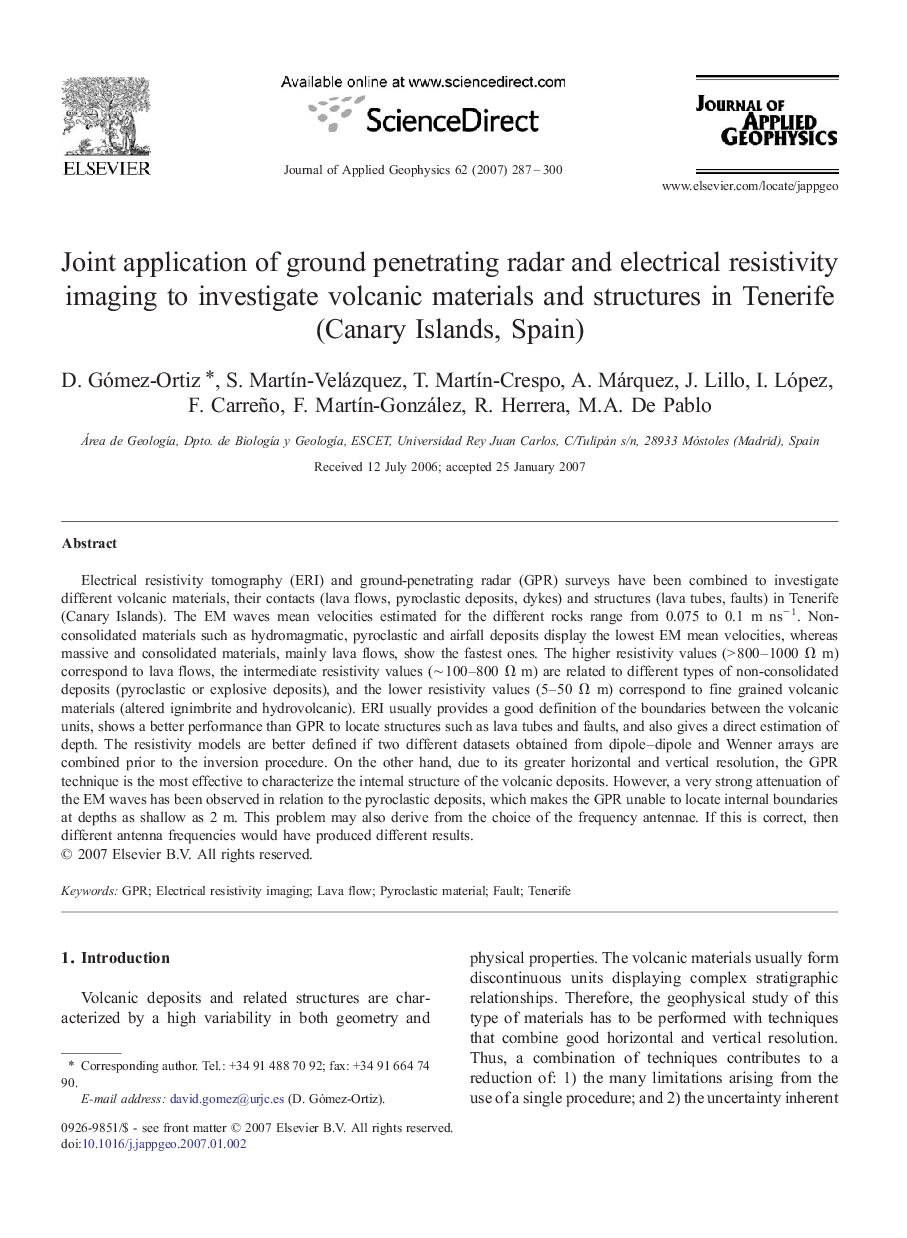| کد مقاله | کد نشریه | سال انتشار | مقاله انگلیسی | نسخه تمام متن |
|---|---|---|---|---|
| 4741106 | 1358635 | 2007 | 14 صفحه PDF | دانلود رایگان |

Electrical resistivity tomography (ERI) and ground-penetrating radar (GPR) surveys have been combined to investigate different volcanic materials, their contacts (lava flows, pyroclastic deposits, dykes) and structures (lava tubes, faults) in Tenerife (Canary Islands). The EM waves mean velocities estimated for the different rocks range from 0.075 to 0.1 m ns− 1. Non-consolidated materials such as hydromagmatic, pyroclastic and airfall deposits display the lowest EM mean velocities, whereas massive and consolidated materials, mainly lava flows, show the fastest ones. The higher resistivity values (> 800–1000 Ω m) correspond to lava flows, the intermediate resistivity values (∼ 100–800 Ω m) are related to different types of non-consolidated deposits (pyroclastic or explosive deposits), and the lower resistivity values (5–50 Ω m) correspond to fine grained volcanic materials (altered ignimbrite and hydrovolcanic). ERI usually provides a good definition of the boundaries between the volcanic units, shows a better performance than GPR to locate structures such as lava tubes and faults, and also gives a direct estimation of depth. The resistivity models are better defined if two different datasets obtained from dipole–dipole and Wenner arrays are combined prior to the inversion procedure. On the other hand, due to its greater horizontal and vertical resolution, the GPR technique is the most effective to characterize the internal structure of the volcanic deposits. However, a very strong attenuation of the EM waves has been observed in relation to the pyroclastic deposits, which makes the GPR unable to locate internal boundaries at depths as shallow as 2 m. This problem may also derive from the choice of the frequency antennae. If this is correct, then different antenna frequencies would have produced different results.
Journal: Journal of Applied Geophysics - Volume 62, Issue 3, July 2007, Pages 287–300